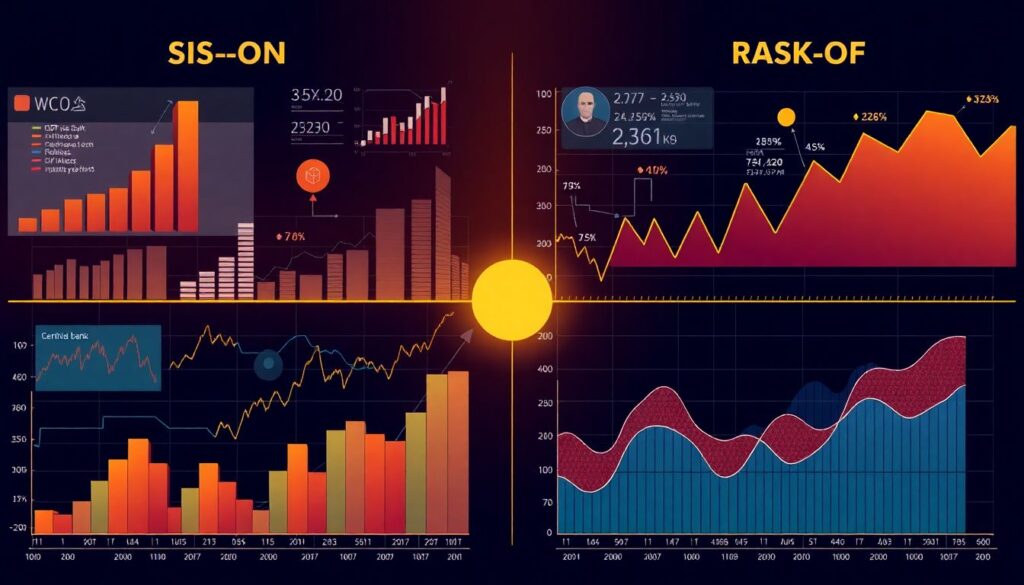Narratives for Risk-On and Risk-Off Phases: Practical Heuristics
Essential Tools for Detecting Market Sentiment Shifts

Understanding the dynamics behind risk-on and risk-off strategies requires a multi-layered analytical framework. Key instruments include macroeconomic indicators, central bank communication analysis, volatility indices (such as VIX), and cross-asset correlation matrices. Additionally, sentiment analysis tools that process financial market narratives from media and social platforms are indispensable. These tools help in identifying shifts in investor psychology—an early signal of transition between risk-on and risk-off phases. Integrating data from options markets (e.g., put-call ratios) and bond yield curves can further enhance the precision of market sentiment detection, providing an edge in investment risk management.
Step-by-Step Process to Build Adaptive Narrative Frameworks

A robust trading heuristics guide begins with a structured approach to parsing economic and geopolitical data. The following steps outline a practical methodology:
1. Identify Dominant Macro Drivers: Begin by isolating the prevailing macroeconomic forces—such as inflation trends, interest rate policies, and global liquidity conditions—that influence investor behavior.
2. Map Narrative Constructs: Track how financial market narratives evolve around these macro drivers. For example, rising inflation may initially be framed positively (growth acceleration) in a risk-on environment but later shift to a risk-off narrative (monetary tightening).
3. Quantify Narrative Strength: Utilize natural language processing (NLP) to measure the frequency and sentiment polarity of key terms across financial media. This quantification enables the detection of tipping points in market psychology.
4. Correlate with Asset Flows: Confirm narrative validity by correlating it with ETF flows, bond issuance data, and equity sector rotation. Consistent alignment between narrative shifts and capital flows strengthens signal reliability.
5. Backtest Strategy Responses: Employ historical simulations to assess how portfolio allocations would have performed under similar narrative conditions, refining your economic cycle investment approach.
Innovative Heuristics for Anticipating Phase Transitions
While traditional indicators offer value, unconventional heuristics can provide early-warning signals. One such method involves tracking the divergence between real-time sentiment indicators and actual asset performance. For instance, when sentiment becomes excessively bullish but asset prices stall or decline, it may indicate a forthcoming transition to a risk-off environment. Another novel heuristic leverages the concept of “narrative fatigue”—the diminishing impact of repeated bullish or bearish news on asset prices. Measuring this decay can offer predictive insight into imminent reversals in market regimes.
Another underutilized technique is intermarket narrative resonance. By analyzing how narratives propagate across markets (e.g., from commodities to currencies to equities), one can detect systemic stress points or exuberance. For example, a synchronized narrative of “supply chain recovery” across industrial metals, transportation stocks, and emerging market currencies could support a high-conviction risk-on posture.
Troubleshooting Narrative Framework Failures
Despite best efforts, narrative-based heuristics can generate false signals. One common pitfall is overfitting sentiment models to historical data, which reduces their robustness in real-time conditions. To mitigate this, periodically recalibrate models using rolling window analysis and cross-validation. Another issue arises from excessive dependence on Western media narratives, which may overlook regional dynamics. Diversifying data sources to include non-English financial outlets and regional market commentary enhances the comprehensiveness of your framework.
In cases where narratives conflict—such as simultaneous bullish tech sentiment and hawkish central bank rhetoric—apply a probabilistic weighting system. Assign impact scores to competing narratives based on their historical influence on asset classes and monitor which narrative gains traction in trading volumes and price action.
Conclusion: Integrating Heuristics into a Dynamic Strategy

The integration of narrative analysis into risk-on risk-off strategies presents a compelling advancement in investment risk management. By moving beyond static indicators and focusing on real-time shifts in financial market narratives, investors can achieve a more adaptive response to the economic cycle. Employing innovative heuristics—such as narrative tension, media saturation thresholds, and cross-asset narrative alignment—enhances the precision of market timing decisions. Ultimately, this approach transforms qualitative market stories into quantifiable inputs for a comprehensive trading heuristics guide.

